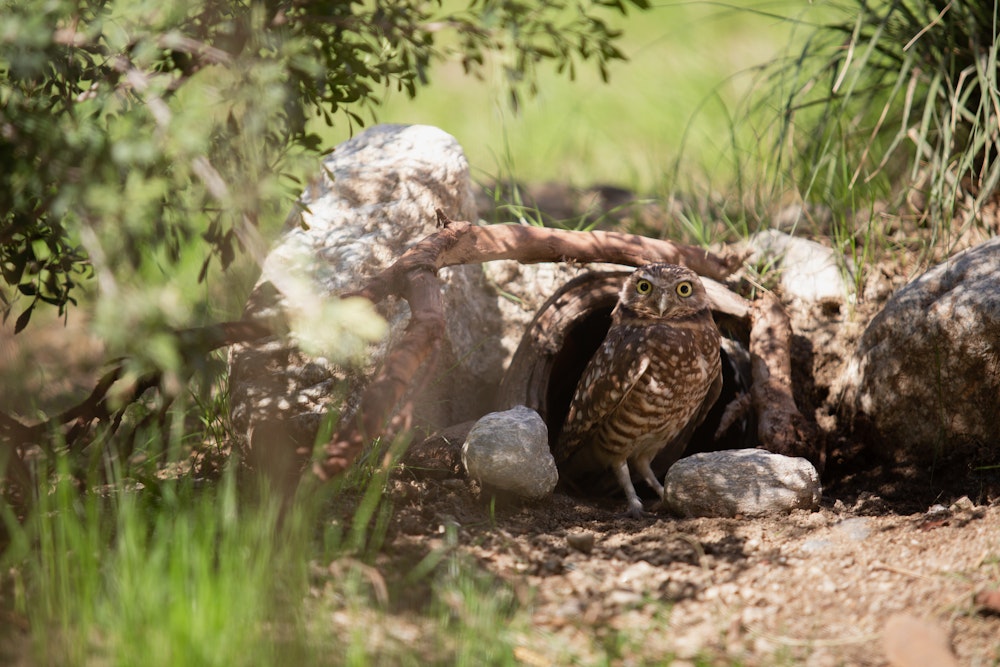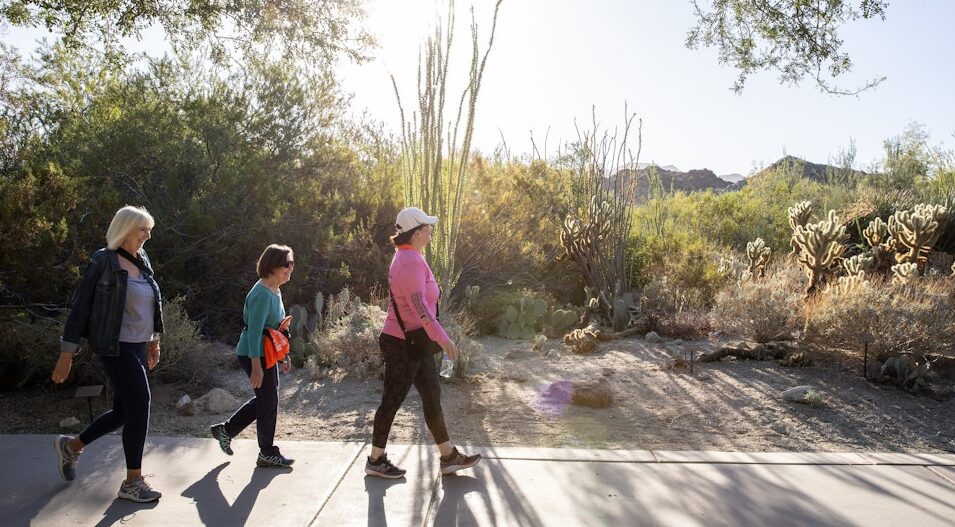Thank You for Planting With Us!
As your native pollinator plants grow, they will provide food and habitat for a variety of local and migrating pollinators, including the endangered Western monarch butterfly.
Here’s how to take care of your seeds at home:
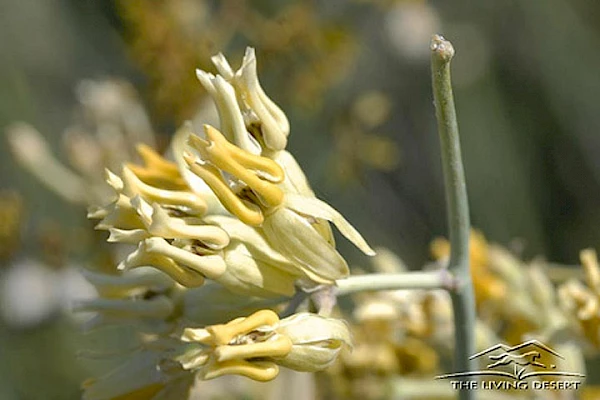
Desert Milkweed
asclepias erosa
Full sunlight
Coarse or sandy soil
Height when fully grown: 4-6 feet
Width when fully grown: 2-3 feet
Bloom: April - October
Zone 3-9
Your seedling can be planted in the ground!
When to expect seedlings to emerge: 10-14 days after planting
Full sunlight
Coarse or sandy soil
Height when fully grown: 4-6 feet
Width when fully grown: 2-3 feet
Bloom: April - October
Zone 3-9
- This species is toxic if ingested by humans.
- This species supports pollinators such as butterflies, beetles, caterpillars, and bees.
Your seedling can be planted in the ground!
- Carefully remove the plant from the pot, trying not to disturb the roots too much.
- Place the plant in the hole and carefully replace the soil you set aside around the roots. Maintain the soil line. (Make sure the soil is up to the same point on the plant as when it was in the pot.
- Water deeply every day for about 1 week to establish the roots. Then, water once per week. In the summer, you can water at the same frequency but for a longer period during each watering.
When to expect seedlings to emerge: 10-14 days after planting
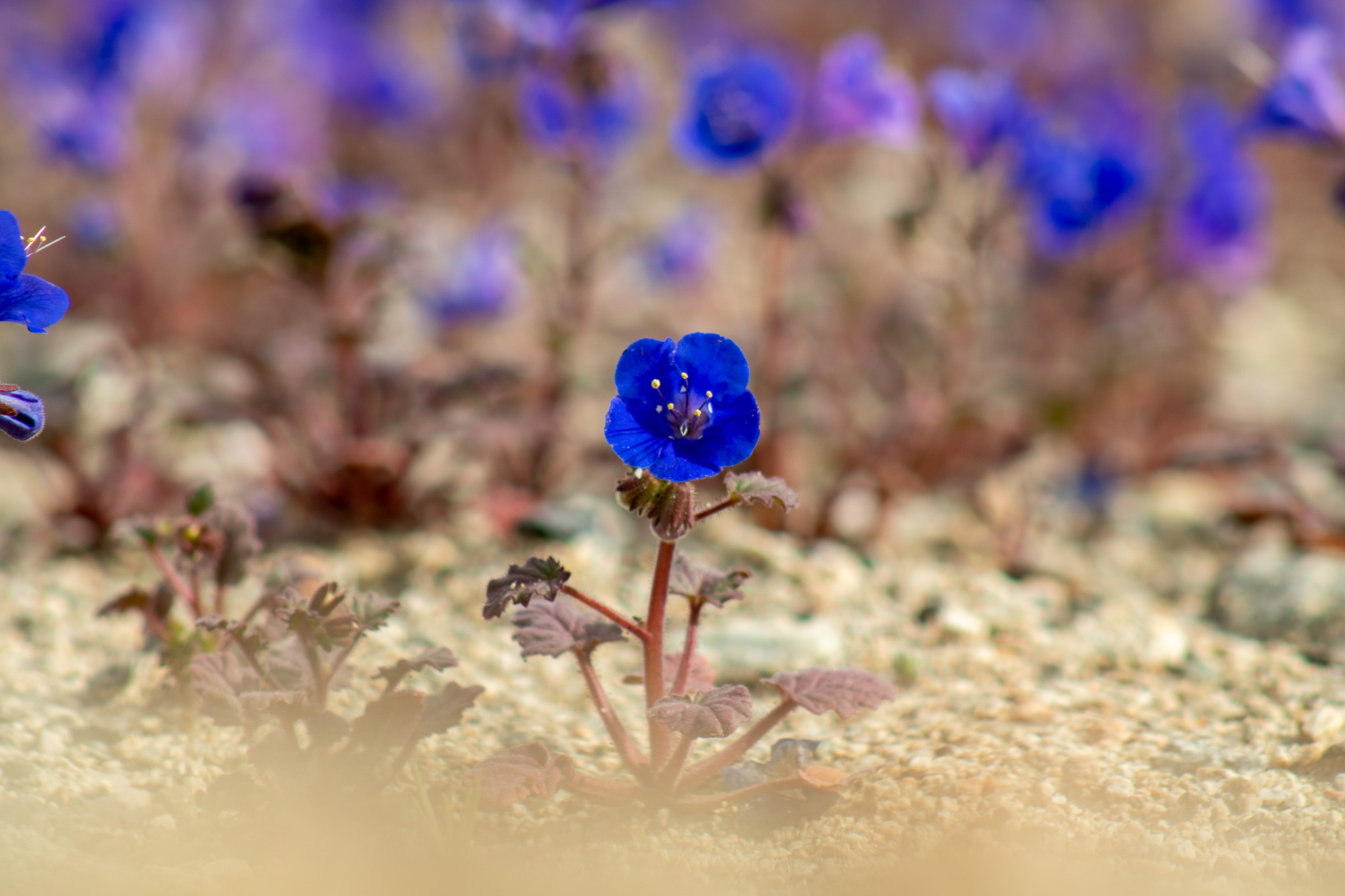
Desert Bluebell
phacelia campanularia
Full sunlight
Coarse or sandy soil
Height when fully grown: 2 feet
Width when fully grown: 1.5 feet
Bloom: February - March
Zone 9-10
When to expect seedlings to emerge: 14-30 days after planting
Full sunlight
Coarse or sandy soil
Height when fully grown: 2 feet
Width when fully grown: 1.5 feet
Bloom: February - March
Zone 9-10
- This species supports pollinators such as butterflies, caterpillars, and bees.
- Choose a spot on your property that gets 6 or more hours of direct sun a day.
- Dig the hole for your seedling only as deep as the roots but twice as wide. Set the soil aside.
- Carefully remove the plant from the pot, trying not to disturb the roots too much.
- Place the plant in the hole and carefully replace the soil you set aside around the roots. Maintain the soil line. (Make sure the soil is up to the same point on the plant as when it was in the pot.)
- Water so the soil is moist, not soaking wet until the seedlings are about 4-6" tall. After that, the seedlings will survive natural rains. If you are experiencing very dry weather, we recommend watering occasionally.
When to expect seedlings to emerge: 14-30 days after planting
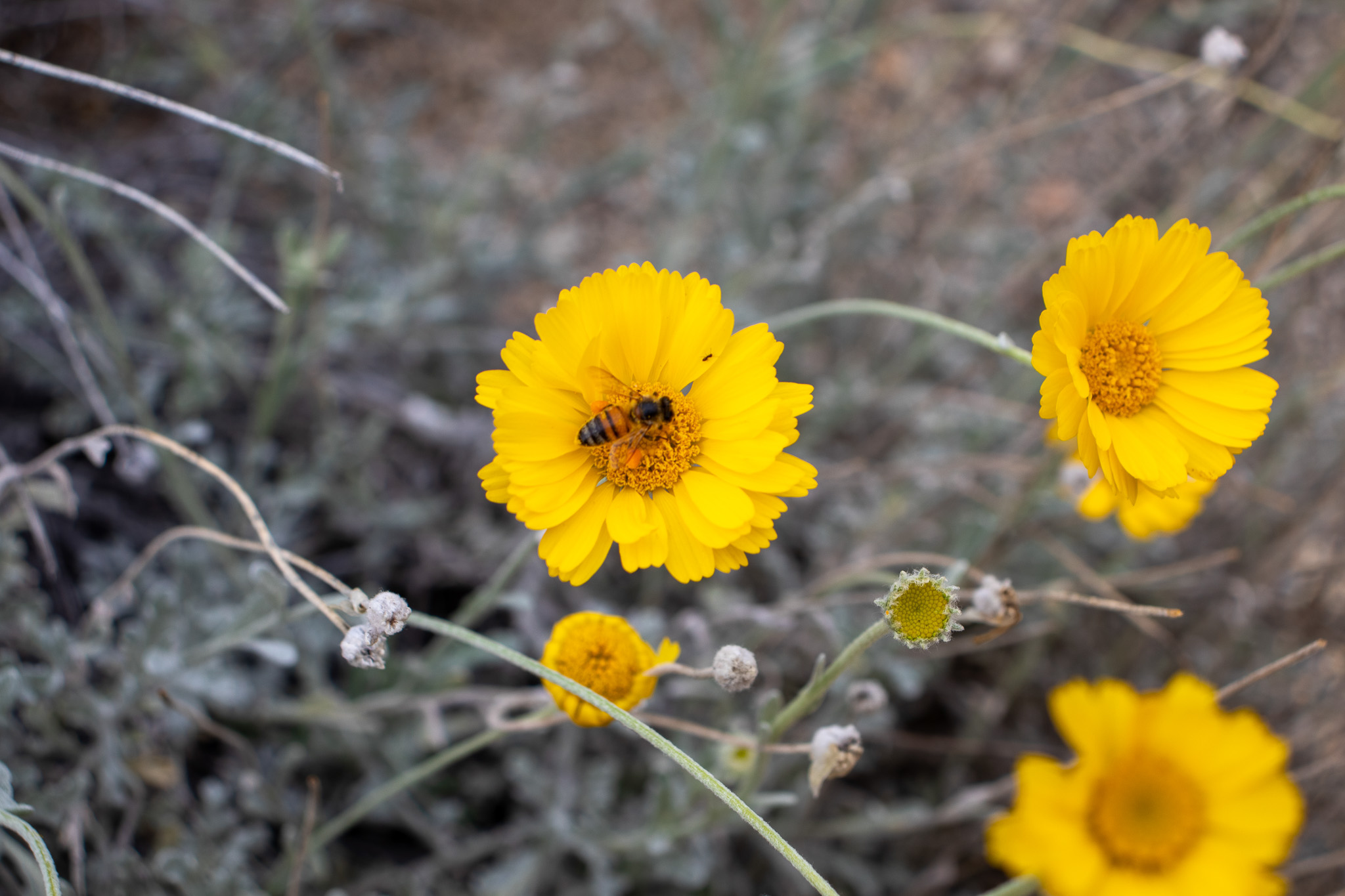
Desert Marigold
baileya multiradiata
Full sunlight
Coarse or sandy soil
Height when fully grown: 1-1.5 feet
Width when fully grown: 2 feet
Bloom: March - August
Zone 9-10
When to expect seedlings to emerge: 4-14 days after planting
Full sunlight
Coarse or sandy soil
Height when fully grown: 1-1.5 feet
Width when fully grown: 2 feet
Bloom: March - August
Zone 9-10
- This species supports pollinators such as butterflies, caterpillars, and bees.
- This plant thrives best in well-drained soil.
- Dig the hole for your seedling only as deep as the roots, but twice as wide. Set the soil aside.
- Carefully remove the plant from the pot, trying not to disturb the roots too much.
- Place the plant in the hole and carefully replace the soil you set aside around the roots. Maintain the soil line. (Make sure the soil is up to the same point on the plant that it was when the plant was in the pot.)
- Water so that the soil is moist, not soaking wet, until the seedlings are about 4-6" tall. The plant needs watering in its first year the most. In the hot summer months, water twice per week. In subsequent years, reduce your watering to once per week. Overwatering can cause this plant to rot.
When to expect seedlings to emerge: 4-14 days after planting
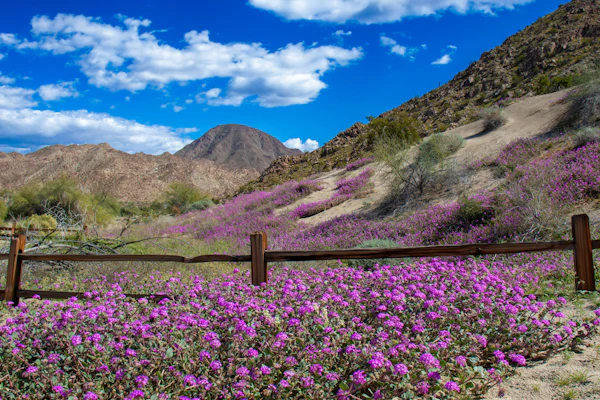
Sand Verbena
abronia villosa
Full sunlight
Light, sandy soil
Height when fully grown: 10 inches
Width when fully grown: 18 inches
Bloom: June - July
Zone 7-9
Then you can remove the cover and bring them out into direct light. When they have grown several sets of true leaves, your seedlings can be transplanted into your garden or yard!
When to expect seedlings to emerge: 21-30 days after planting
Full sunlight
Light, sandy soil
Height when fully grown: 10 inches
Width when fully grown: 18 inches
Bloom: June - July
Zone 7-9
- This species supports pollinators such as butterflies and bees.
Then you can remove the cover and bring them out into direct light. When they have grown several sets of true leaves, your seedlings can be transplanted into your garden or yard!
- Choose a spot on your property that gets 8 or more hours of direct sun daily. This plant will thrive best in well-drained soil.
- Dig the hole for your seedling. Seedlings should be planted at a shallow depth no greater than 1 inch, at least 1 foot away from one another. Set the soil aside.
- Carefully remove the plant from the pot, trying not to disturb the roots too much.
- Place the plant in the hole and carefully replace the soil you set aside around the roots. Maintain the soil line. (Make sure the soil is up to the same point on the plant as when it was in the pot.)
- Keep the soil moist during the first few weeks after planting. After about one month, reduce watering to once per week. Allow the soil to dry out before the next watering completely. Overwatering can cause this plant to rot.
When to expect seedlings to emerge: 21-30 days after planting
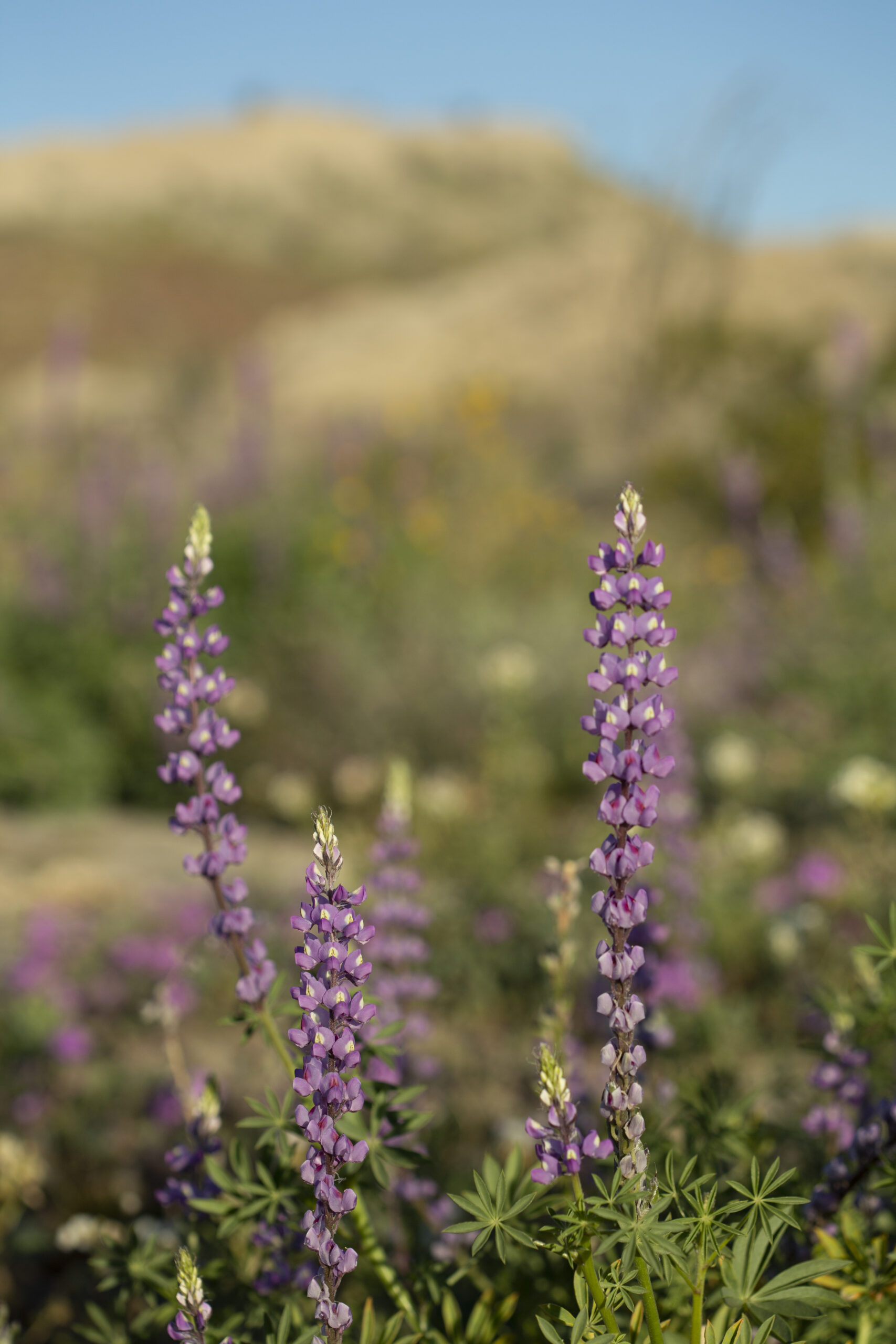
Desert Lupine
lupinus sparsiflorus
Partial sunlight
Loose, sandy soil
Height when fully grown: 4-6 feet
Width when fully grown: 2-3 feet
Bloom: April - July
Zone 4-7
When to expect seedlings to emerge: 15-25 days after planting
Partial sunlight
Loose, sandy soil
Height when fully grown: 4-6 feet
Width when fully grown: 2-3 feet
Bloom: April - July
Zone 4-7
- This species is toxic if ingested by humans. Not recommended for families with small children or pets.
- This species supports pollinators such as butterflies, bumblebees, honeybees, and hummingbirds.
- Choose a spot on your property that gets partial sunlight.
- Dig the hole for your seedling, setting the soil aside as you dig. Be sure to loosen the soil deeply to accommodate the lupine’s long taproots. Seedlings should be planted 2-3 feet apart.
- Carefully remove the plant from the pot, trying not to disturb the roots too much.
- Place the plant in the hole and carefully replace the soil you set aside around the roots. Maintain the soil line. (Make sure the soil is up to the same point on the plant as when it was in the pot.)
- Keep the soil evenly moist to ensure good root development (for about 1 week). Once your plants are deeply rooted, they only need water during periods of drought.
- Consider adding a layer of mulch to help lock in soil moisture and keep the roots cool.
When to expect seedlings to emerge: 15-25 days after planting
If you want to expand your home pollinator garden, download The Living Desert’s Native Plant Guide or visit our Gift Shop to pick up a selection of local plants and seed kits!
Looking For More?
Feeling inspired to add more pollinator-friendly plants to your garden? Learn how to make your garden an official Certified Wildlife Habitat by clicking below.
